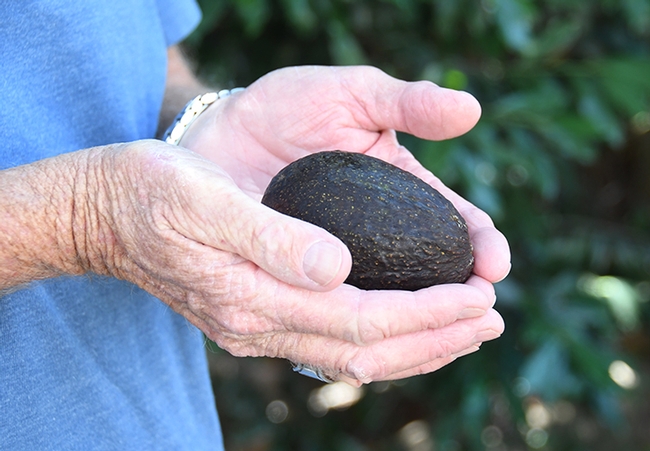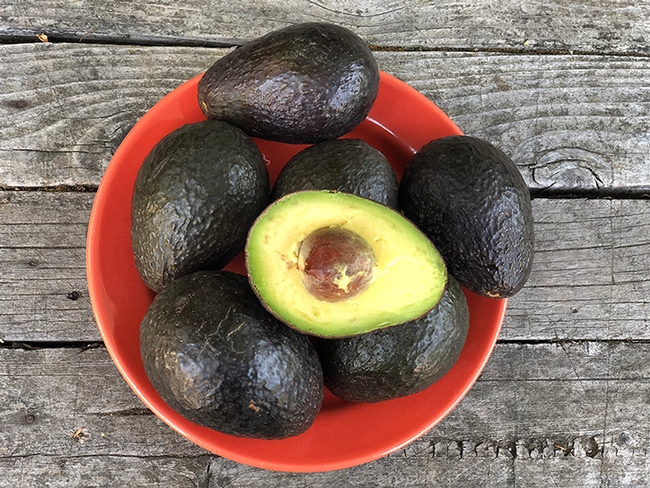If you're like most of us, you “go bananas” for a banana for breakfast.
It's healthy, nutritious and packed with potassium.
But wait! You should probably go bananas for another fruit--that pear-shaped avocado. Did you know the avocado provides more potassium than a banana?
It does. A medium-sized banana yields 422 milligrams of potassium, while a medium-sized avocado, a whopping 708 milligrams.

“Eating more unsaturated fats -- as opposed to saturated fats and processed carbohydrate -- is a delicious step we all can take to maximize cardiovascular health,” Adams says. “Avocados are such a delicious way to do that!"
We love our avocados, our veritable green goddess that never disappoints, never deceives, never dissatisfies, whether we “butter” them on toast in the morning for breakfast, or slice or chunk or cube them for our salads at lunch and dinner. Health-conscious folks call them a superfood, and even mash and freeze them to ensure a steady supply in the winter. There's even a website on “50 Things to Love About Fresh Avocados.”
This year, California's 2000 avocado growers anticipate a yield of 374.6 million pounds. That crop forecast, according to Tom Bellamore, president of the California Avocado Commission, is nearly double the yield of the 2017 crop and “despite the ravages of Mother Nature in California's avocado growing regions.”
UC Cooperative Extension adviser and avocado researcher Ben Faber of Ventura and Santa Barbara counties, points out that the avocado is really a fruit, not a vegetable. “The Supreme Court classified the tomato in 1920 or so as a vegetable because that's the way people think of it and it was taxed differently for tariffs. Politics or botany separates a lot of things in our lives.”
“The avocado is an amazing fruit,” Faber says. “It grows on a tree and comes to maturity, reaches certain oil content and a stage at which it will ripen, but it does not ripen on the tree. It needs to be removed from the tree before it will soften. If the fruit is removed before it has reached maturity it will not soften, and will remain rubbery and inedible.”
“One of the problems is that the fruit will hang on the tree for an extended period of time and it is hard to know when they are mature,” Faber points out. “Avocados are not like apricots where you have about two weeks to get the fruit off before it falls off. As the fruit stays on the tree, it gradually develops more and more oil content and has a richer flavor.”
What if the fruit stays on the tree too long? “It can develop an almost rancid flavor,” Faber says. “So it is good to know when the best, acceptable flavor is. Avocado varieties fall into general seasonal periods when they are mature, such as ‘Fuerte' and ‘Bacon' in winter, ‘Hass' in spring/summer, ‘Lamb-Hass' in summer/fall.”

The fruit will typically be ripe in seven to ten days, Faber advises. “If you want to speed things along a bit you can take three or four avocados and place them in a loosely closed paper bag with two or three Red or Golden Delicious apples or ripe kiwifruit. The purpose of the apples or kiwifruit is that these fruit produce a natural plant hormone, ethylene, that will help stimulate the avocado to produce its own ethylene. Apples and kiwifruit are known to produce lots of ethylene. The Delicious apples are varieties that produce more ethylene than other apple varieties. You can keep them even after they are shriveled and they will be producing ethylene.”
Never place your avocados in a plastic bag “unless you keep it open since the fruit needs to breathe during this process,” he says. “Just keep the fruit on your kitchen counter or in a warm place; 68F is the ideal temperature. Lower and higher temperatures both actually slow the process.”
Plant scientists trace the origin of the avocado (Persea americana) to south central Mexico. The avocado belongs to the flowering plant family, Lauraceae. Growers and gardeners glean tips on pest management from the industry and from the UC Statewide Integrated Pest Management Program.
Of the many known varieties, avocados fall into three broad categories based on whether they are of the Mexican, Guatemalan or West Indian races of Persea americana, the avocado species and the crosses that occur between these races. Generally speaking, California varieties have been the result of crossing between the Mexican and Guatemalan races. West Indian race varieties are not common here because of their generally lower cold tolerance.”
Ben Faber, like Linda W. Adams, enjoys avocados. He usually buys them “whenever they are reasonably priced.”
“One of the reasons I do research is that all the downed fruit is not salable because it is against food safety restrictions to introduce it into the food chain and all that fruit either gets eaten by coyotes or me,” he quips, adding “The tree is too big to fit into my backyard.”
Looking for a great recipe? The California Avocado Commission offers many recipes, including what it calls “The Best Guacamole Ever."
Dietitian Adams shares one of her favorites at https://www.delish.com/cooking/recipe-ideas/a19872947/avocado-tomato-salad-recipe/.
Avocado Tomato Salad
Ingredients
1/4 cup extra-virgin olive oil
Juice of 1 lime
1/4 tsp. cumin
Kosher salt
Freshly ground black pepper
3 avocados, cubed
1 pint cherry tomatoes, halved
1 small cucumber, sliced into half moons
1/3 cup corn
1 jalepeño, minced (optional)
2 tbsp. chopped cilantro
Directions
In a small bowl, whisk together olive oil, lime juice, and cumin. Season with salt and pepper.
In a large serving bowl, combine avocados, tomatoes, cucumber, corn, jalapeño, and cilantro. Gently toss with dressing and serve immediately.
Enjoy! The avocado keeps good company!

